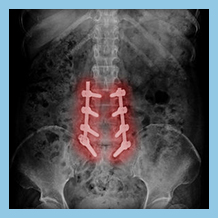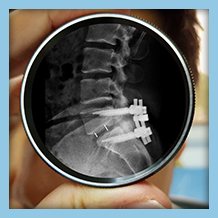

As with any surgery, there is always the risk of failure. Still, it is best to call upon the skill and experience of Orthopedic Laser & Spine Surgery when faced with spinal fusion surgery or pseudarthrosis. Their world-class facilities in Florida, Pennsylvania, New York, and New Jersey can help you take the next step in your journey to relieve your pain and repair any pseudarthrosis that resulted from your failed spinal fusion.
What Causes Pseudarthrosis?
Pseudarthrosis-also is known as, nonunion-occurs when the bones in your spine fail to heal correctly. This happens when the graft material used to allow the fusion to form doesn’t entirely create new solid bone tissue. This creates more problems, as movement will continue in the affected area.
There is a myriad of different causes of pseudarthrosis. It is often caused by poor bone healing after fusion surgery, either due to surgical oversights, a lack of preparation or planning before the operation or missteps taken during the procedure. However, there are all sorts of other lifestyle factors that may potentially lead to poor bone health and by extension, pseudarthrosis:
- Smoking
- Use of steroidal medication
- Obesity
- Metabolic disorders
- Uncontrolled diabetes
- Malnutrition
- Poor sleep
- Osteoporosis and certain chronic illnesses
While the causes of pseudarthrosis are varied, it’s essential to understand that minimizing risk doesn’t guarantee that your fusion will be successful. Contacting the experienced team at OLSS as soon as you begin experiencing symptoms is vital to your recovery.
Symptoms of Pseudarthrosis
Once a patient has undergone spinal fusion surgery, the symptoms can either present for a few days or even months. Generally, patients have a three-month recovery period after spinal fusion, in which they feel significant relief of the pain that necessitated the surgery but have the anticipated discomfort in the surgical area, especially around the incision point. This could be aggravated by the neck, back movement and radiating into the shoulder or arm. The pain could last for months or years.
For a person to be symptomatic of pseudarthrosis, they will have to be experiencing continued pain within the affected area that lingers even after a reasonable amount of time has passed since the surgery. While every patient experiences symptoms differently, some of the more commonly reported symptoms of pseudarthrosis include:
- Stiffness in the parts of the body is affected.
- Numbness or abnormal sensations.
- Weakness of the spine, especially in the area of the surgery.
Symptoms may also extend to nearby arms, shoulders, legs, or lower extremities if the non-union contributes to nerve irritation.
Further complicating the issue is that it can be challenging to diagnose pseudarthrosis, as symptoms present differently for different patients. Where one patient may not notice any symptoms, others may have symptoms appear long after the surgery to the point that they are misdiagnosed as some other issue. Sometimes pseudarthrosis can be challenging to detect in image tests because it is so minuscule. But it can also appear as a gap at the surgical site where no bone grows, and no signs of healing over time are noted.
How is Pseudarthrosis Treated?
Regarding the treatment of pseudarthrosis, the knowledge and experience of our doctors at OLSS are second to none. This is also where our patient-specific approach can pay dividends.
We often advise revision surgery as one recommended treatment option for our patients. However, we will run a battery of image tests before this to rule out other potential sources of occurring post-surgery symptoms. If it is determined that you need second spinal fusion surgery, our doctors can recommend the following:
- Following a different approach than what was initially performed.
- Making improvements or corrections to existing hardware from the first surgery.
- Utilizing a different type of bone graft material.
While spinal fusion is far from a surefire bet, even in the best surgical hands, when you are a patient with OLSS, we make sure to use our world-class facilities and doctors to put you in the best possible position for success. One of the surest ways to ensure your spinal fusion is successful is to follow their recommendations to increase your odds of beneficial results. This will typically include sticking to healthy eating and exercise as you heal and recover while avoiding smoking and other harmful lifestyle risk factors.
Top-Rated Pseudarthrosis Treatment and Care
You need only the best treatment and care when you are facing spinal fusion surgery, or worse yet, pseudarthrosis after a failed spinal fusion surgery. At Orthopedic Laser & Spine Surgery, our top-rated facilities and doctors specialize in getting you back on your feet and the road to recovery. To schedule a free consultation, call our office at (855)-853-6542 or fill out this contact form.
